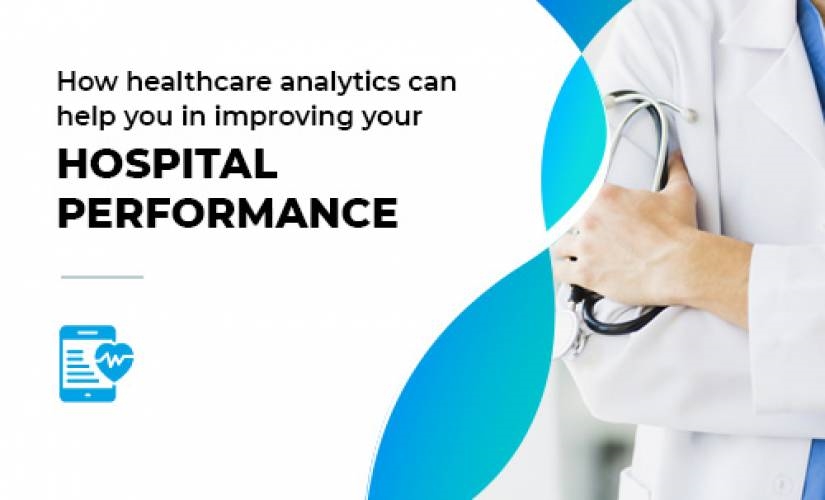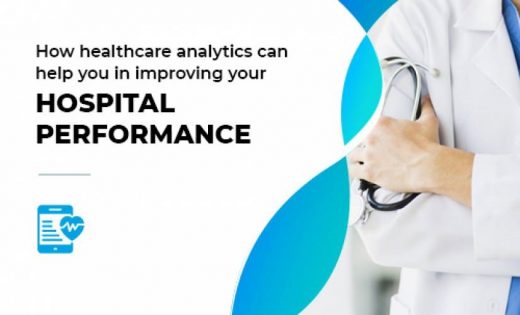How Healthcare Analytics Can Help You in Improving Your Hospital Efficiency
How Healthcare Analytics Can Help You in Improving Your Hospital Efficiency

The healthcare industry is in the middle of a performance revolution. Patients are fed up with substandard service. The pandemic has done nothing but worsen the failings in the industry. While everyone agrees, things need to change; the question is how. That is why many healthcare organizations turned to analytics to figure out the best ways to improve their performance.
According to Allied Market Research, the result is a spending increase in healthcare analytics from $ 9.36 Billion in 2017 to $ 34.16 Billion by the year 2025. The 17.7% annualized growth rate will have huge ramifications on some of the most extensive federal programs in the industry, such as the Affordable Care Act (ACA), Medicare, and the Children’s Health Insurance Program (CHIP) program.
Below we address how healthcare analytics leads the charge in how hospitals and other healthcare institutions help patients.
5 Ways Healthcare Analytics Can Improve Patient Care
1. Manage donations and grants
Limited budgets can affect the quality of patient care in many institutions. Therefore, to help many of the nonprofit healthcare institutions around the country, it is essential to have the ability to capture and track donor’s engagement and retention. The more information an organization has on individuals, the more we can help them increase and donate more often to medical causes.
For example, we worked with a nonprofit in Florida who wanted to improve their fundraising and financial management capabilities to track donations, assign volunteer tasks, and increase engagement with their community.
We simplified their process by creating Dynamics 365 event and fundraising campaigns that made it easier to segment and increase donations from interested people in the community.
2. Accessing patient records
Healthcare analytics also leads to better patient data portability. Doctors can now share patient information faster than ever through healthcare cloud services.
Electronic Health Record (EHR) systems have been around for decades. However, recent technology innovations have made it possible to store and track massive amounts of patient data.
The use of cloud storage and better EHR systems is a goldmine for healthcare professionals looking to evaluate their care’s success rate and access patient records faster to ensure they offer better care sooner.
For example, we worked with St. John’s Well Child & Family Center. Using our EHR-BI integration, they improved the quality of their reports, access them on an ongoing basis, and developed stronger relationships with their patients.
3. Better patient experience
Given the pace of medicine today, more doctors are burned out and not giving the individual attention each patient deserves. Often top doctors spend 30 minutes talking to patients and then hand off the rest of the work to their assistants. Then they go on to the next patients. It is a revolving door of patients and challenges.
At top hospitals, it is common for doctors and patients to communicate only once every few months. While medical technology is improving, the patient experience is worse than ever. Many patients feel they are treated like a number during some of the most vulnerable periods of their life.
The right healthcare analytics help doctors track their communications to stay in touch with patients and give them the type of care they deserve. Analytical tools can track things like complaints, pattens, patient outcomes, and other metrics to analyze whether patients are getting the highest quality care level.
4. Reduce tedious tasks
Healthcare providers are spending a lot of their on onerous reporting and other tasks. Having the right tools can help them save time to focus on critical items like patient care.
For example, we worked with a Nonprofit Healthcare center that used Power BI reports visualizing their patient care performance. By having better analytics and understanding that data, managers spent 25% less time on tedious tasks.
In an age of HIPPA and other healthcare regulations, they need the right tools to spend less time on administrative tasks. They can use these tools to stay compliant with these regulations to ensure they do not neglect their patients.
5. Insurance
Insurance is the 900lb beast of the healthcare industry. Patients and doctors need insurance coverage for care, but it is a grueling process that can slows down treatments to the detriment of patient care. Healthcare analytics supplies insights that can help professionals adjust their policies and healthcare plans based on the data from existing claims, premiums, and clients.
The more a practice knows which treatments will be accepted and how faster they can implement patient care procedures that improve the patient experience with insurance. Having better insurance coverage, along with an improved patient experience, was previously known as an oxymoron.
Furthermore, better analytics can reduce unnecessary treatments and procedures, so patients save even more. Insurance companies can use this money for higher-value treatments.
Finally, predictive analytical models can show ways to prevent some of the most severe diseases in their early stages. By spending a little more on prevention, it might be possible to delay and stop some conditions years or decades before becoming an issue giving patients a higher quality of life.
Final Thoughts
The healthcare industry has several problems they face right now between difficult insurance companies, declining patient experiences, and funding challenges. While healthcare analytics will not solve all these problems, healthcare organizations can use their data to develop a smarter solution to these problems.
The post How Healthcare Analytics Can Help You in Improving Your Hospital Efficiency appeared first on ReadWrite.
(16)


